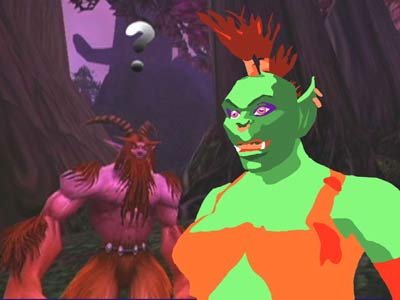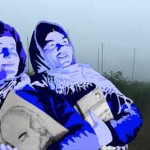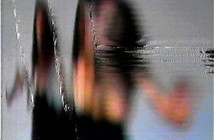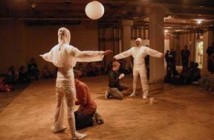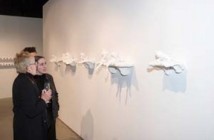Animated documentary film is not a new idea. Traditionally animation was used in documentaries and instructional videos as visual portrayals of abstract ideas, or as a representation of an artifact that no longer exists, such as demonstrating a DNA structure, or the re-creating of dinosaurs. The use of animation within a documentary film in the digital age has expanded on the traditional uses, and has taken on a new life creating new genres within the field. By definition, animated films are a fictional product, but when combined with biographical or autobiographical narratives, the filmmaker is able to construct images of society and reality addressing traditional documentary topics as well as making difficult subject matters more accessible. Like documentary filmmaking, the animator works as a creator of his or her own truth.
Through the use of animated documentary, artist Jacqueline Goss creates video and web based works which explore the way science, technology, and database systems bring about cultural change, and technological innovation. Goss’s works combine traditional documentary techniques like biographical interviews with high contrast, limited palate rotoscoping of still images. Goss, a former professor at Mass College of Art and current professor at Bard College, presented the animated documentary pieces How To Fix The World (2004), There There Square (2002) and Stranger Comes To Town (2006) as part of the Balagan Experimental Film & Video Series on November 16th.
Based on Soviet psychologist A.R. Luria’s research in Uzbekistan in the 1930’s, the half hour How To Fix The World brings to life Luria’s conversations with illiterate Central Asian farmers grappling with modernization and imposed assimilation under Soviet rule. Through the use of cyanotype, rotoscoping and other animation techniques Goss illuminates Luria’s subjects while providing a humorous yet perceptive narrative revolving around education and how it can be manipulated to indoctrinate. With the use of the rotoscoped images, this piece could very easily have become a bad Ken Burns documentary, but Goss successfully avoids this problem through the use of inventive dialogue between her subjects (the still photographs), other animations, and the narrative. Her use of voice, biographical narrative and animation captivate and successfully convey to the viewer images of society making a fairly loaded subject matter (the use education and language, which can be manipulated for ulterior motives) more accessible.
The next two pieces were not as successful. There There Square, a silent film on the short animated history of map making in the United States, started out as an interesting look at how the rules, histories and tools of language and mapmaking systems affect our perception. Goss explores these ideas through the use of stunning layout of text layered within animation, and morphing techniques. Unfortunately, 5 minutes into the 11minute piece the narrative starts to drag, bland anecdotes are inserted and the piece loses meaning. Instead of speaking to the viewer, her narrative becomes excessively personal, mudding the overall meaning of the piece isolating and distracting the viewer from the beautiful use of text in the moving image.
The third and newest piece screened, Stranger Comes To Town, is Goss’s overly political, trite and tiresome exploration of physical and virtual identity and immigration. In all fairness, Goss prefaced the evening by stating it was a “work in progress”. It begins with the wonderful quote “They say there’s only two stories in the world: man goes on a journey, and stranger comes to town”. The piece then transitions into the animation, which is appropriated footage from Homeland Security immigration tapes, along with semi-interesting snippets of interviews with foreigners or “aliens” about the immigration process they are subjected to. The animation and narrative utilized in this part of the piece is simple, beautiful and straightforward, explaining to the viewer the new and sometimes overly intrusive rules and regulations imposed on immigration in a very satirical and accessible way.
Goss combines this footage with pinched footage from the online role-playing game, World of Warcraft, in an attempt to create amachinima-like effect. Machinma, the appropriation of video game footage, combined with new narrative and dialogue can be a very effective art form. Through the usage of this medium, artists like Feng Meng Bo and entertainers like the creators of Red V.S. Blueare able to deliver profound exchanges on modernization and the nature of militarism and violence, both real and virtual, in today’s society.
Each interviewee takes on a virtual persona, which is supposed to represent their imagined self within America. Goss attempts to make a connection between the game footage (virtual persona and environment) and the re-worked Homeland Security footage (the reality that we live in), yet the playing with identity becomes overworked and diluted, and Goss weakly bats around a disjointed, overly political and repetitive narrative, but Goss’s characters are flaccid and her action is dull. There is little exchange of ideas, or questioning of virtual and real persona; it is a disjointed film with a narrative that bounces from one topic to another, missing its chances for relevance.
Links:
Balagan
Jacqueline Goss' work was screened on November 16, 2006 at the Coolidge Corner Theatre.
All images are courtesy of the artist.

